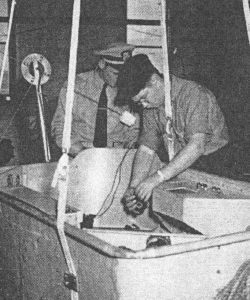RAM (Program)

Research Aerospace Medicine, or RAM was a program stablished by the US Navy with the aim of to study problems of man and flight supplying airborne facilities and support to projects of interest to the program.
It was directed by Captain Norman Lee Barr, MC USN a physicist, naval aviator, and flight surgeon in charge of the Aero Medical Space Research Laboratory of the US Navy.
The core of the program was composed by one flying aeromedical laboratory mounted onboard a R5D Skymaster plane.
Also two permanent ground stations were home territory for RAM: one at the Naval Medical Research Institute at the Naval Medical Center, Bethesda, Maryland, and the other at Naval Air Station Anacostia. The well equipped laboratories at these locations made it possible to receive, record and evaluate physiological data from an airborne source.
The equipment in the laboratories was relatively mobile and which could be carried by plane and set up at other locations. But in addition to this ground laboratory gear, there was a fully equipped receiving station inside the flying laboratory in the R5D. Physiological information was received, while the flying laboratory was in the air, and recorded.
In the mid-1940s, as was envisioned the possibility of space flight, there came a need for a physiological data transmission system that would collect data on a subject while in flight and make it available in "real time" to ground bases. One of the great contributions of the program was the development of a telemetry method for recording in real time a pilot's physiological reactions, heart reactions, and respiratory conditions. The system was fully tested during several balloon flights of the Navy manned program Strato-Lab, on which RAM acted as co-sponsor along with the Office of Naval Research.

